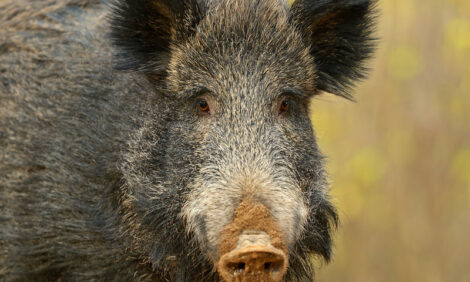



Market Preview: Pork Exports More Robust Than Ever
US - Weekly U.S. Market Preview w/e 16th March, provided by Steve R. Meyer, Ph.D., Paragon Economics, Inc.The performance of the U.S. pork industry in terms of pork exports got off to a blistering start for 2007. January pork exports were up 20.8% from one year ago. Shipments to Japan were record large at over 105 million pounds carcass weight equivalent, an increase of nearly 43% from last year! And Japan was not the only market that saw robust growth in January. Shipments to Russia, South Korea and Hong Kong/China grew by 44%, 35% and 72%, respectively, from their January 2006 levels.
The only real disappointment in January was our business with Mexico, which declined by 12.5% from last January. Mexico is our second-largest customer for muscle meats and in total value, but I don't see this decline as a problem at this time. Mexico appears to be a price-sensitive market. Cutout values were about 5% higher, on average, during January of this year, so that might be the reason for the slow start. We will get a good test of that theory when the February data are released in April, as February cutout values were more that 14% higher than last year.
I know I have over-used the word "remarkable" when talking about the industry's export performance, but it is really a most appropriate descriptor. The past three years have seen year-over-year increases of 27%, 22% and 12%; 2006 exports, representing nearly 15% of our total carcass-weight pork production, were 75% larger than 2003, for example. That means the pork from nearly one in every six pigs slaughtered by U.S. packers is shipped to another country. Further, 91.4% of those pigs are born in the United States and 97.4% of them are fed here.

Exports Boost Value
Just what does this mean in terms of dollars and cents? Professor Glenn Grimes at the University of Missouri has answered that question for many years with the data shown in Figure 2. These are the results of asking the question: "What would hog prices have been if production had remained the same and we had not seen a gain in our net export position?"

Note that in Professor Grimes' table, I have boldfaced the years that our net export position increased. It is those years that provide a positive impact on hog prices. Years in which our net exports fall actually result in negative price pressure. Also, note that prior to 1995 an "increase in net export position" was, in fact, a decrease in net import position. The U.S. was the world's largest importer of pork in 1987, the first year shown in the table. For the past three years, we have been the world's largest exporter. Remarkable. (There's that word again.)
So, would hog prices have been $43.99/head lower last year had we not increased our net exports by nearly 5% of total production? That is the sum of the gains of the past three years. The answer is "yes," if we had produced the same amount of hogs. That is unlikely, had prices been lower, but it brings us back to exports providing profits and growth opportunities. Both are important.
What's Ahead with Feed Prices?
I don't believe the U.S. industry will be hurt badly with respect to exports as long as the U.S. corn sector can remain an exporter. U.S. grain prices will be lower than world prices as long as we export, even though the magnitude of that advantage for grain buyers has fallen as basis relationships have changed. Should corn exports ever cease, though, interior U.S. prices will go above world prices and our cost advantage will vanish. Then our entire meat export position becomes vulnerable.
Will that happen? It depends on how many of our crop acres we are willing to plant to corn and the job that seed companies, input suppliers and corn producers do in increasing average yields. And it depends upon time. All of those factors will eventually respond to increase the amount of corn available in the United States, but getting through the next 2-3 years may still be very painful for U.S. hog producers.










